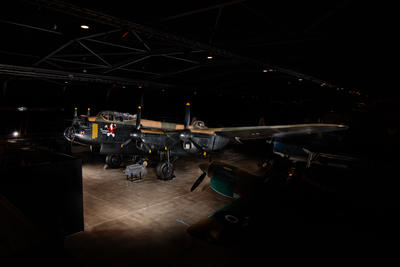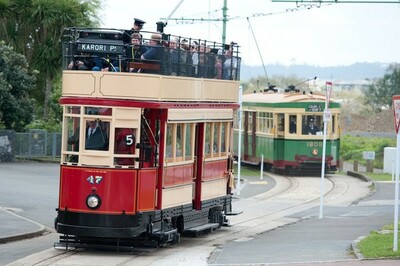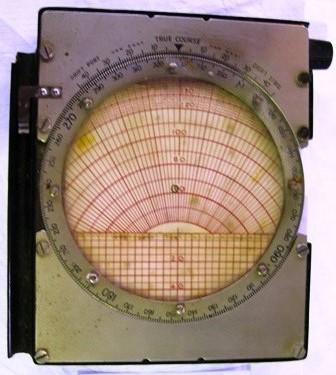Aircraft [Avro Lancaster B Mk 7]
Maker and role
A. V. Roe (AVRO) Austin Works, Manufacturer
Production date
Jun 1945
See full details
Object detail
Accession number
1964.116
Production period
Description
Avro Lancaster B Mk 7 (modified to B Mk3). AVRO 683 B7 Lancaster - completed as NX665 after VE Day and held in storage at 38 M.U. until transferred to the French navy as WU13 in 1951. Served with 24F, 10F, 10S and finally 9S at Tontouta, New Caledonia.
Presented by the French Govt. as a memorial to the NZer's who served in Bomber Command in WW II. Now includes major components of NX666/WU05.
Long range, heavy bomber, 4-engine, metal, mid-wing, monoplane with Aluminium frame and panels. Fuselage built in 5 modular sections. Power plant: 4 x 1620 HP V12 Rolls Royce Merlin engines. Accommodation: crew of 7 with pilot. The aircraft is painted black and camouflage. This Lancaster has Merlin 24/2 engines with SU carburettors driving Hamilton constant speed hydramatic A/5148 propellers. The engine developed 1620 HP for take-off from its twin row of 6 cylinders inclined at 60°. The engines and several other components are in working order.
Currently painted in 1944 Bomber Command scheme, but has a 'dual personality'.
The starboard side is painted as ND752/AA-O of 75 Sqn., and the port side as PB457/SP-V of 101 Sqn. Both of these Lancasters were lost over Germany and their markings have been chosen for WU13, not because they are associated with famous aircraft or crews, but were simply two of the thousands of the Lancasters in Bomber Command.
Repainted as NE181 JN-M 'The Captain's Fancy.' It served with 75 (New Zealand) squadron and completed over 100 bombing missions in Europe during WW2.
Presented by the French Govt. as a memorial to the NZer's who served in Bomber Command in WW II. Now includes major components of NX666/WU05.
Long range, heavy bomber, 4-engine, metal, mid-wing, monoplane with Aluminium frame and panels. Fuselage built in 5 modular sections. Power plant: 4 x 1620 HP V12 Rolls Royce Merlin engines. Accommodation: crew of 7 with pilot. The aircraft is painted black and camouflage. This Lancaster has Merlin 24/2 engines with SU carburettors driving Hamilton constant speed hydramatic A/5148 propellers. The engine developed 1620 HP for take-off from its twin row of 6 cylinders inclined at 60°. The engines and several other components are in working order.
Currently painted in 1944 Bomber Command scheme, but has a 'dual personality'.
The starboard side is painted as ND752/AA-O of 75 Sqn., and the port side as PB457/SP-V of 101 Sqn. Both of these Lancasters were lost over Germany and their markings have been chosen for WU13, not because they are associated with famous aircraft or crews, but were simply two of the thousands of the Lancasters in Bomber Command.
Repainted as NE181 JN-M 'The Captain's Fancy.' It served with 75 (New Zealand) squadron and completed over 100 bombing missions in Europe during WW2.
Brief History
This aircraft was originally built as a Lancaster Mk 7. Built by Austin Motor Works in June 1945 as NX665, this Lancaster did not see wartime service, but was later passed to the French (as one of 54) to support the Western Union (the fledgling NATO).
Somewhat modified, the aircraft operated from Morocco, Vietnam and New Caledonia. Based in Noumea from the late 1950s as WU-13, it carried out air-sea rescue, surveillance flights and other duties around the Pacific.
Prior to its retirement, the Board of MOTAT had written to the French Embassy in Wellington expressing an interest in acquiring a Lancaster if one became available. This request was fulfilled, and NX665 was donated by the French Government to the people of New Zealand, flying into Auckland in April 1964.
Over the following years this aircraft has been steadily restored and modified by members of the Bomber Command Association (NZ). The intention has been to closely recreate the appearance of a Lancaster Mark 3 of Bomber Command of circa September 1944. Parts have been added including a radar and a mid-upper turret, repainting in camouflage and marked up to represent a wartime era Lancaster. "AA O" on one side, to represent Lancaster ND752 of 75 Squadron. "SR V", the code letters carried by the Lancaster PB457 of 101 Squadron, a unit of the RAF.
Somewhat modified, the aircraft operated from Morocco, Vietnam and New Caledonia. Based in Noumea from the late 1950s as WU-13, it carried out air-sea rescue, surveillance flights and other duties around the Pacific.
Prior to its retirement, the Board of MOTAT had written to the French Embassy in Wellington expressing an interest in acquiring a Lancaster if one became available. This request was fulfilled, and NX665 was donated by the French Government to the people of New Zealand, flying into Auckland in April 1964.
Over the following years this aircraft has been steadily restored and modified by members of the Bomber Command Association (NZ). The intention has been to closely recreate the appearance of a Lancaster Mark 3 of Bomber Command of circa September 1944. Parts have been added including a radar and a mid-upper turret, repainting in camouflage and marked up to represent a wartime era Lancaster. "AA O" on one side, to represent Lancaster ND752 of 75 Squadron. "SR V", the code letters carried by the Lancaster PB457 of 101 Squadron, a unit of the RAF.
Marks
MJN / NE / 181 Sticker
ND752 AA O Painted
PB457SRV Painted
THE / CAPTAIN'S / FANCY Sticker
ND752 AA O Painted
PB457SRV Painted
THE / CAPTAIN'S / FANCY Sticker
Other name
Avro Lancaster NX 655
L'Aeronavale Lancaster WU 13
L'Aeronavale Lancaster WU 13
Credit Line
A. V. Roe (AVRO) Austin Works. Jun 1945. Aircraft [Avro Lancaster B Mk 7], 1964.116. The Museum of Transport and Technology (MOTAT).




![Aero Engine [Merlin]; Rolls-Royce Limited. Aero Division](https://collection.motat.nz/records/images/medium/54603/5ba6f2708c46b5be2d3bceb54d712c6101abb5ef.jpg)
Public comments
Kia ora Craig, thank you for sharing these great memories with us.
- MOTAT Curatorial Research posted 2 months ago.
This aircraft overflew my boys' intermediate primary school in central Auckland, courtesy of the French delivery aircrew, and it was seen flying overhead by many thousands of other Aucklanders on that last day of flight. The French markings included the aircraft's main colour as being predominantly white all over, so that it appeared as a large white aerial bird of peace and goodwill on that final day in the air. In the early years MoTAT would start the two inboard engines and give them both sufficient power to 'fly' the tailplane, so that the aircraft appeared whilst stationary, in the 'flying' aspect of a fully horizontal fuselage! Quite the sight, and quite the sound to remember for a lifetime!
- Craig posted 2 months ago.